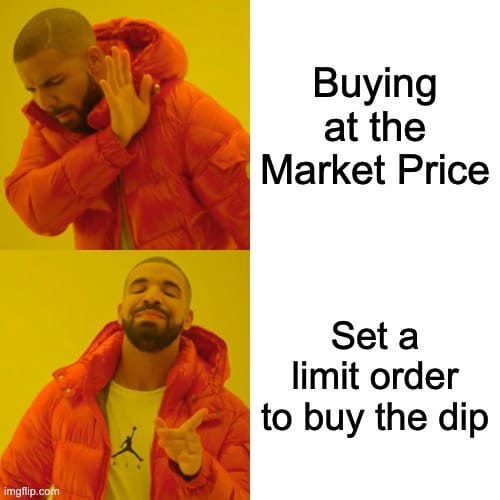Understanding Different Order Types on an Order Book - Basic

Huh? Market order? Limit order? If these terms have you scratching your head, you're in for a treat!
Let's unravel the mysteries of these basic order types on an order book, which can be found on a centralized exchange (CEX), while making it as fun as discovering a secret level in your favorite video game.
What are Market Orders
- Definition:
Picture this: you're super hungry (bullish on BTC) and want your food NOW. You don't care about the price; your stomach's rumbling is too loud. That's a market order for you – it's all about buying or selling immediately at the best available price. - Pros and Cons:
- Pros: Fast. Like, Usain Bolt fast. You're getting into or out of the market quicker than you can say "Bitcoin."
- Cons: Price? It's a surprise! You might pay more or sell for less than expected if the market's volatile.
- When to Use Them:
When you're feeling FOMO and need to jump on the crypto train before it leaves the station. - Example:
Alice is bullish on BTC. She sees it rising and decides, "It's now or never." She places a market order, gets her BTC, and is ready to ride the wave, price be darned.
What are Limit Orders
- Definition:
Now, imagine you're a bargain hunter. You know exactly what you want and the price you're willing to pay. You tell the waiter (exchange), "I'll have the BTC, but only if it's at X price." That's a limit order – you set the price, and the order only fills if the market meets your conditions. Buy limits are like setting a trap for when the price drops to your perfect point. Sell limits are the opposite - you aim for the moon and won't sell until the price hits your dream number. - Pros and Cons:
- Pros: You're in control. No more surprises on the price front.
- Cons: Patience is key. Your order might not fill if the market doesn't hit your price.
- When to Use Them:
When you've got a strategy and are willing to wait for the market to match your ideal conditions. - Example:
Let’s say BTC is now traded at 50,000. Bob is bearish on BTC in the short term. He thinks it'll dip lower, so he sets a limit order at 42,000. A few days later, the market dipped, his order filled, and Bob got his BTC at his desired price.

Conclusion
Understanding market and limit orders is like learning the basic dance moves before you hit the club. Whether you're diving into the fast-paced world of market orders or playing the waiting game with limit orders, knowing when and how to use them can make or break your trading strategy.
And remember, if you're itching to try these out without risking your hard-earned crypto, our testnet is the perfect playground - request some test tokens on our faucet, and start experimenting with market and limit orders on our testnet today.
P.S. If you have never used the likes of MetaMask before, please check this guide to learn how to protect yourself from scammers.

